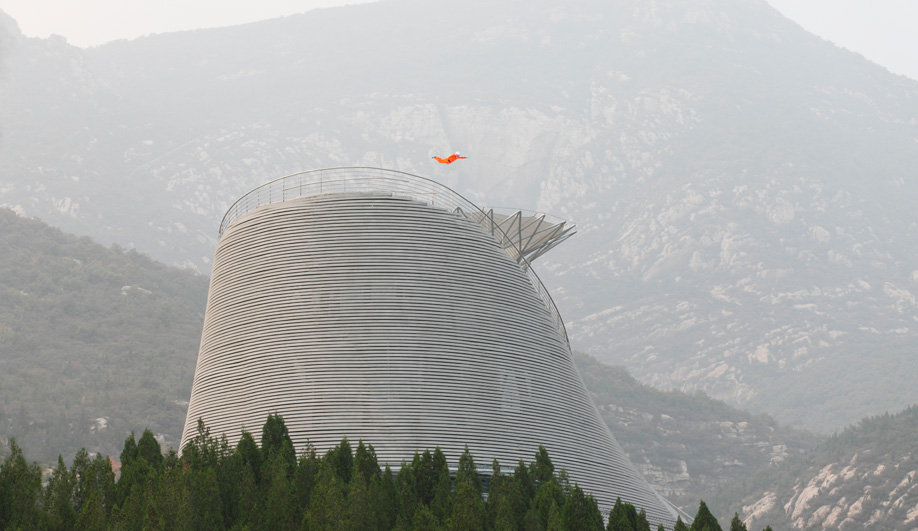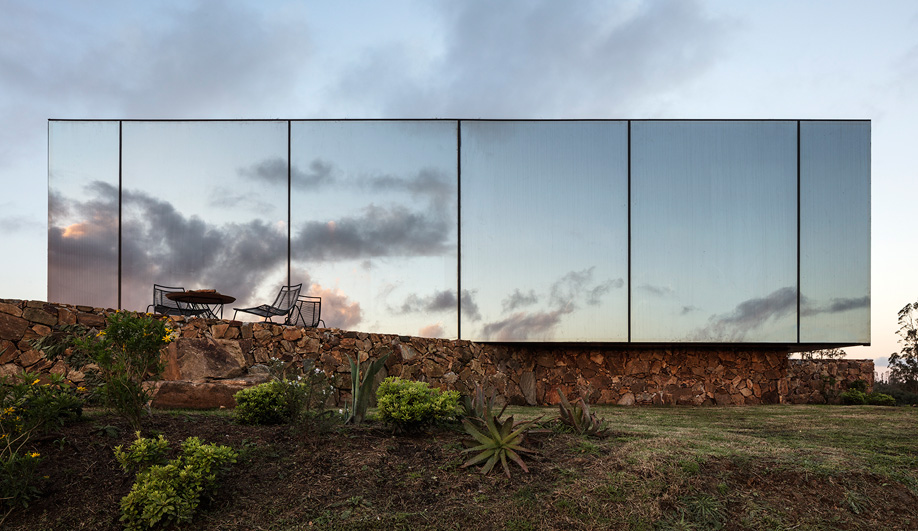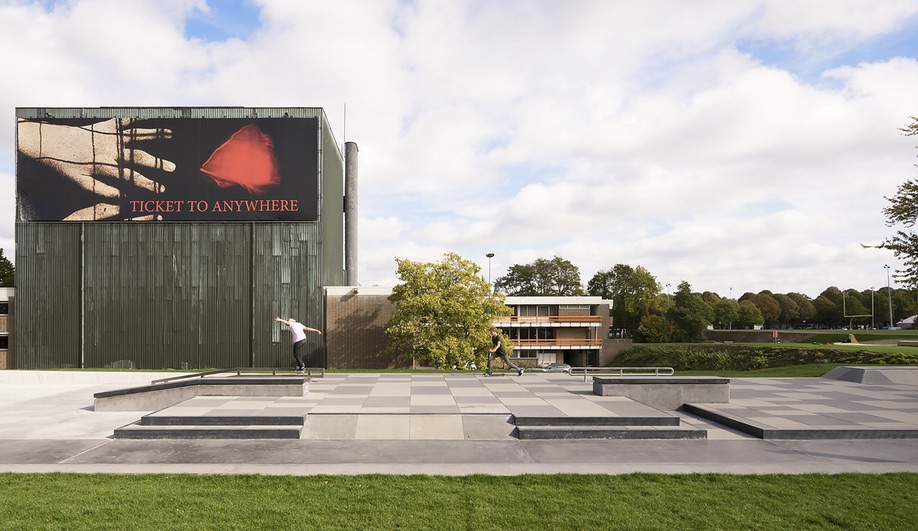
Architect Austris Mailitis helps a group of Buddhist monks reach the sky.
In the future, near and far, people will tell the story of a hilltop in the shadow of Songshan Mountain in Henan Province, central China, where Buddhist monks – spiritual but mortal men – soared skyward without wings, aloft on nothing but air.
The tale begins in 2010, when a young Latvian architect named Austris Mailitis receives an unusual commission: to design a space where the monks of Shaolin Temple, home of Kung Fu and the birthplace of Zen Buddhism, can fly. Mailitis is awed by Buddhist philosophy and martial arts practice, spanning more than 1,500 years. But foremost, he’s impressed by the monks’ near-supernatural physical prowess (which, it’s rumoured, includes levitation). He sees images of the region’s rocky skyline and cypress-covered hills, and an idea forms.
Mailitis’s vision for the Shaolin Flying Monks Theatre is an extension of the hilltop, with the open structure mimicking the curved slopes of nearby mountains. In the centre of the amphitheatre, a trio of steel trees encircles a transparent wind tunnel developed by Latvia-based company Aerodium; the tree branches splay apart as if to toss the monks into the atmosphere. (An illusion – they’re kept afloat by a vertical rush of forced air.)
Completed in 2016, the theatre is an aerial space for monks to perform the region’s mythology. Local and international spectators will come away with tales of warriors and kings, ancient Zen masters, and the evolution of Kung Fu – but also with the story of a foreign architect who dreamed that monks could fly and made it happen.
Emily Urquhart is a journalist and folklorist. As a child she once flew out her second-storey bedroom window and still wonders if it was real or a dream.




